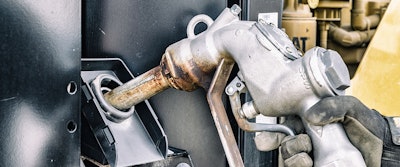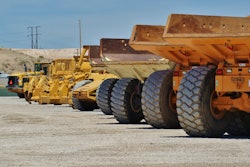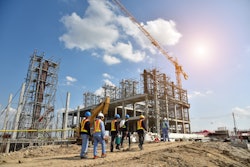
The average cost of diesel in the U.S. at the start of 2022 was $3.72 a gallon. By June, it had climbed to a peak of $5.57 and then began to drop a bit. But we’re still a far cry from the good old days of December 2020, when diesel was averaging just $2.59. Who knows what will happen to prices in the year ahead!
Instead of focusing on fuel prices, a smarter strategy for construction contractors is focusing on ways to reduce fuel burn. At Caterpillar, we always come back to idle time. That’s because we see in study after study, and on site after site how much it increases fuel consumption. Most construction equipment burns an average of one gallon an hour at idle. Do the math for your operation. See how it adds up?
The good news, it’s fairly easy to reduce idle time — and your fuel consumption along with it. Here are seven simple steps to follow:
1. Limit warm-up time. Three to five minutes at the start of a shift is plenty, according to the U.S. Environmental Protection Agency. Any longer and you’re just wasting fuel.
2. Follow the five-minute rule. Is equipment idling more than five minutes? Shut it down. You’ll use less fuel to restart it than to leave it running. Consider implementing shutdown timers that automatically turn off machines after five minutes or other user-defined time periods. (Here’s an example of how a shutdown timer works on Cat® wheel loaders.)
3. Shut it down over lunch. Operators may leave equipment idling while they’re at lunch or on a break to keep the cab at an ideal temperature. Comfort is important, but there are less expensive ways to achieve it. Look into engine-off cab heaters and coolers that reduce the “need” to idle.
4. Make it automatic. Auto-idle or engine-idle management systems monitor equipment parameters and automatically reduce engine rpm to idle rpm or below normal machine idle rpm. That can reduce idle fuel consumption to less than one gallon per hour.
5. Limit cool-down time. Idling for two minutes at shift-end allows most equipment to reach optimum shutdown temperatures. Newer equipment comes with automatic shutdown features that control this time and process for the operator.
6. Monitor, measure and improve. Equipment telematics will show you operating hours by machine, by operator, even by jobsite. You can compare operating fuel burn versus idle fuel burn. With the data in hand, you can identify where to make improvements that will have the biggest effect on your fuel bill and your bottom line.
7. Educate your team. Fuel prices are hitting individuals hard, too, so use that as a way to talk to your operators about idling. Would they leave their car running while their family goes into a restaurant for dinner? Back it up with data: Share your fuel costs and idle information to help operators understand how their actions affect production and costs.




















